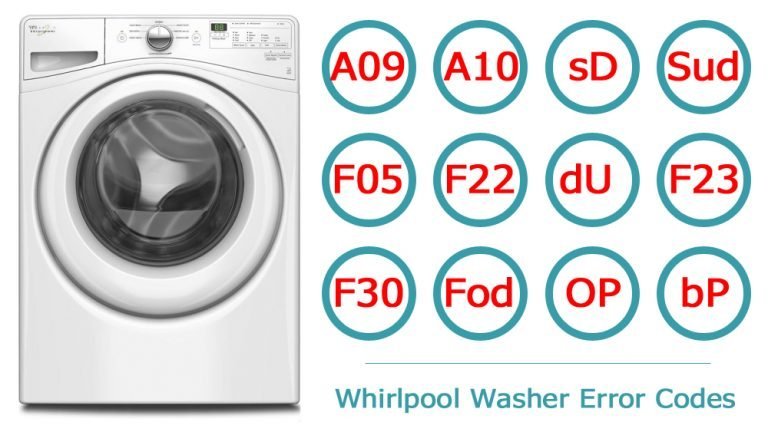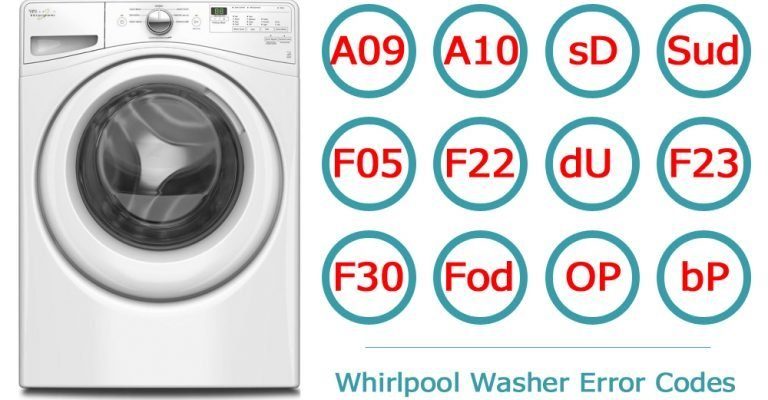
The LE error code on a Whirlpool washing machine typically signals a problem with the motor. Think of it like when your car’s check engine light flicks on. It doesn’t always mean something catastrophic; it might just need a little attention to get back on track. In this guide, we’ll break down everything you need to know about this error code, how to troubleshoot it safely, and what your next steps might be. So, let’s dive into understanding this washing machine enigma, one sudsy step at a time.
Understanding the LE Error Code
So, what exactly does this cryptic LE code mean for your Whirlpool washing machine? In simple terms, the LE code stands for “Lock Error.” It’s the machine’s way of telling you that there’s a problem with the motor’s function. Imagine trying to walk with a pebble in your shoe. It’s not pleasant, and if you don’t address it, you might eventually have a bigger issue on your hands (or feet, in this case).
The LE error often arises from issues like an overloaded machine, which puts excess stress on the motor. Overloading is the equivalent of overpacking a suitcase—it makes everything harder to maneuver. Sometimes, this code could also indicate a problem with the washing machine’s rotor position sensor or wiring. It’s like having a loose shoelace; everything’s technically in place, but it doesn’t quite function as smoothly as it should.
Now, while it might sound like a big deal, encountering the LE error doesn’t mean your washing machine is a goner. It’s more of a tap on the shoulder than a full-blown alarm. The important thing is to approach the issue methodically and carefully. After all, your washing machine is a household hero, handling the dirty work we prefer to avoid.
Common Causes of the LE Error
You might be wondering, “Why would my washing machine suddenly display this error?” Well, several common causes could trigger the LE code. Let’s explore them to demystify this issue.
First off, overloading the machine is a prime suspect. When you cram the drum until it’s practically bursting at the seams, it’s like asking a toddler to carry a suitcase – it’s just too much for the little guy to handle. Your washer may try its best, but eventually, it’ll let you know it’s struggling by showing the LE error.
Another plausible cause could be a malfunctioning rotor position sensor (RPS). This tiny device keeps tabs on the motor’s operation, ensuring everything runs smoothly, much like a traffic cop directing vehicles. If the RPS is faulty, it might send incorrect signals, leading your washer to flash that pesky LE code. Finally, tangled load or blockage can also be culprits. Imagine trying to untangle a bunch of headphones—it’s frustrating and prone to errors.
Once you’ve identified a potential cause, it offers a more straightforward path to a solution. Knowing these common triggers means you can avoid them in the future, keeping your trusty washing machine running smoothly for many more loads.
Is It Safe to Keep Using the Machine?
Here’s the deal: when faced with the LE error, safety should indeed be the first thought. Is it okay to keep using the machine? The short answer is no, not until you’ve addressed the underlying issue. It’s like ignoring a small leak in your ceiling; it may not seem like a big deal initially, but it can lead to further damage if left unresolved.
Continued use of the machine with an error code puts extra strain on its components and could lead to more severe damage down the line. Imagine trying to drive your car with a flat tire; technically, you might make it a short distance, but it’s not going to be gentle on the vehicle and could land you in a more considerable predicament.
The best course of action? Pause and check. Assess what’s causing the error. If it’s beyond a simple overload or tangled load fix, it might be wise to call in a professional. Repair technicians can ensure everything’s back in working order without additional risk to your appliance or your home.
Steps to Troubleshoot the LE Error
Ready to get hands-on and tackle that LE error? Troubleshooting can be straightforward, even for the beginner. Pull your sleeves up, and let’s break it down step-by-step.
First, unplug the machine. This is one of the most critical safety steps. By disconnecting the power, you’re preventing any accidental electrical mishaps. Think of it like turning off a computer before you start fiddling with its components – it’s a safety net.
Next, open the washing machine and check for an overloaded drum. If too many clothes are packed in, remove some and try running a smaller load. It’s akin to lightening your suitcase to make it easier to carry. If this doesn’t resolve the issue, inspect the rotor position sensor and wires for visible signs of damage or disconnection. Sometimes, just a slight tweak or adjustment can set things right again.
Finally, if the DIY approach doesn’t yield results, it’s time to call in the pros. A certified technician can run more detailed diagnostics and repairs if necessary. Always remember, seeking professional help is not admitting defeat—it’s ensuring your machine gets the best care possible.
Preventing Future LE Errors
Now that you’ve tackled the current issue, let’s talk prevention. What can you do to keep your Whirlpool washing machine issue-free and humming along smoothly?
Firstly, avoid overloading your machine. Think of it like filling a backpack: a little room to breathe ensures everything fits and functions well. Place clothes in loosely, giving them room to move during the wash cycle. Also, regularly check and clean the drum and rotor position sensor to ensure there’s no debris or blockage.
Additionally, establish a routine maintenance check. Much like changing your car oil or checking tire pressure, a little regular attention can go a long way. This could be as simple as checking for loose wires or ensuring no buildup in the drum.
Finally, stay informed. Keep a lookout for signs of wear or small changes in performance, and address them quickly. Staying ahead of issues will save you time and money in the long run, ensuring your washing machine remains a helpful ally in your laundry endeavours.
Armed with this information, you’re ready to tackle any LE errors head-on with confidence and ease. Happy washing!
